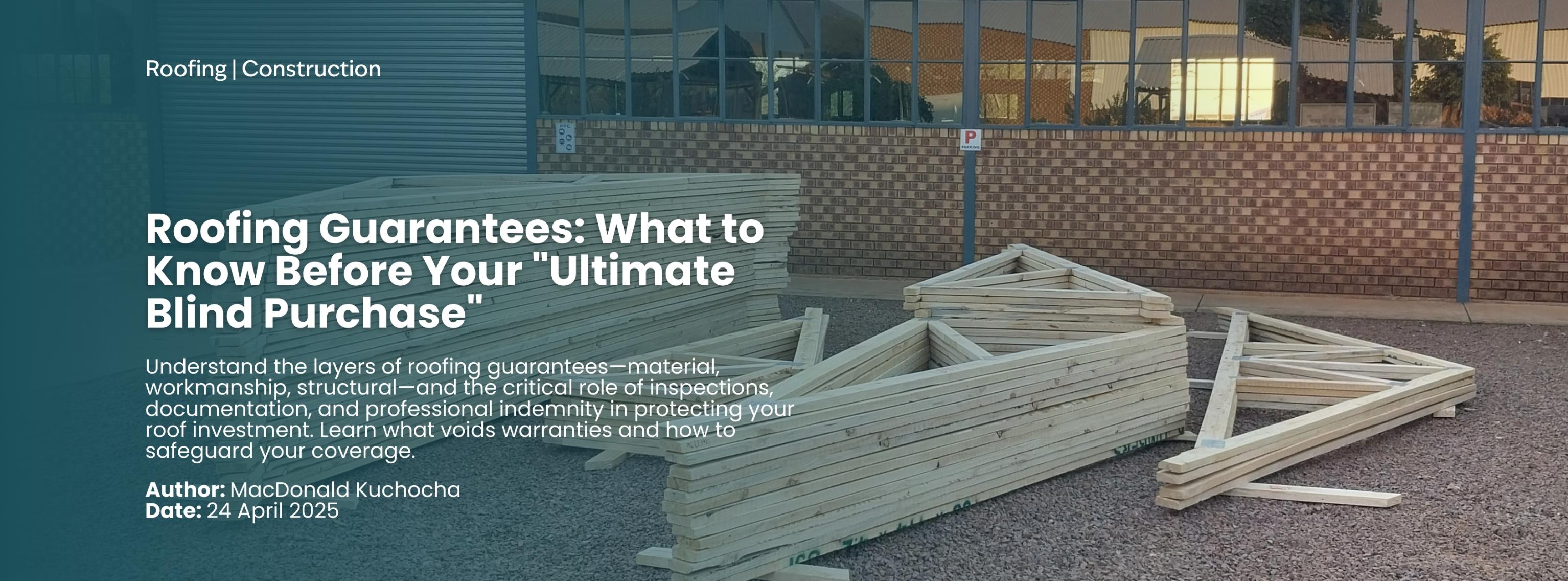Navigating the Complexity of Roofing Guarantees
When investing in a new roof – typically one of the largest single expenditures for a property – understanding the guarantees that protect this investment becomes critically important. Yet the technical language and varied coverage terms often leave property owners uncertain about their actual protection level until problems arise.
The Three-Tier Roof Guarantee Structure
Roof guarantees typically comprise three distinct layers of protection, each covering different aspects of the roofing system:
- Material guarantees cover manufacturing defects in the roofing products
- Workmanship guarantees address installation quality and techniques
- Structural guarantees cover the engineering design and load-bearing capabilities
These distinctions help identify coverage gaps before they become costly problems. However, another critical layer often overlooked is Professional Indemnity Insurance—which is tied to inspections by qualified structural engineers. This protection is only maintained through mandatory annual inspections, and failure to complete them may void the professional indemnity altogether.
Material Standards and Guarantee Implications
For timber systems, guarantee validity is intrinsically linked to material grading and moisture content. Our timber trusses use kiln-dried pine that’s FSC-certified and graded to SANS 1783-2 standards, ensuring a sufficient load capacity. Lower-grade timber may carry shorter guarantee periods or exclude key structural elements entirely.
Geographic Considerations for Metal Components
Steel components, particularly in Ultra-Span® systems, have guarantee limitations based on location. Z275 galvanisation coating offers corrosion protection of around 50 years inland, but this drops to 20–25 years within 500m of the coast. Despite being clearly noted in documentation, this is frequently overlooked during planning and purchasing.
The Maintenance Requirement That Voids Most Guarantees
According to the Institute of Timber Construction South Africa, annual inspections can prevent 90% of structural failures. This requirement is often buried in the fine print—but skipping even one inspection can void both the product and Professional Indemnity Insurance. Keeping clear records of these inspections is essential, especially for future insurance claims.
The Inspection Protocol That Protects Your Investment
A proper inspection includes reviewing original plans, assessing bracing alignment, testing moisture content in timber or checking galvanisation in steel, and obtaining certification from a professional engineer. This aligns with NHBRC registration, ITC-SA accreditation, and SANS 10400 compliance.
Understanding the 80/20 Rule in Roof Failures
Around 80% of roofing structural failures stem from two causes: incorrect material specification and inadequate bracing. These often fall between material and workmanship guarantees, making professional documentation at installation time critical.
Another lesser-known but crucial consideration is “man load”—the added stress of workers (e.g. installers, solar panel contractors) walking on various roof areas. Advanced software like MiTek Pamir accounts for this man load, including on roof overhangs, where the lever effect significantly increases stress and cost. MiTek and its partners prioritise safety here, unlike some in the industry who overlook this risk to save costs.
Documentation: The Missing Link in Guarantee Protection
Written guarantees must specify coverage periods, exclusions, required maintenance, and how to file a claim. Without detailed documentation—or relying solely on verbal promises—property owners face major risks when issues arise years down the line.
Evaluating Guarantee Provider Stability
A guarantee is only as good as the company behind it. Always assess a provider’s operational history, local presence, and engineering capacity. Long-term guarantees (20+ years) require a partner likely to still be operating decades from now.
At Roof Brands, we engineer roof trusses with MiTek-certified software and build to SANS, ITC-SA, and NHBRC standards. We take professional indemnity, guarantee documentation, and maintenance protocols seriously—because we know how much is at stake when you’re investing in your property. Our combination of technical precision and long-term support means your roof is safe, certified, and backed by real accountability.


